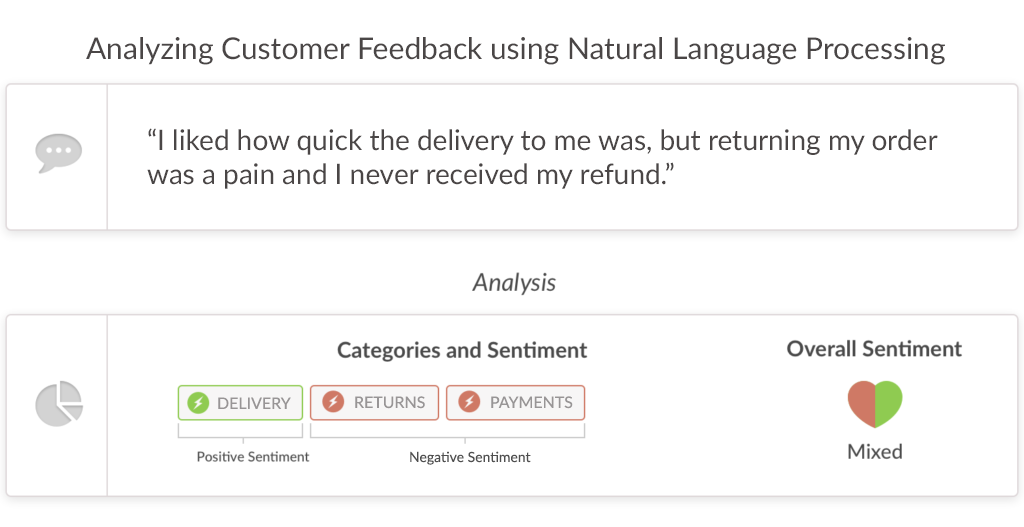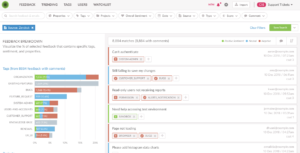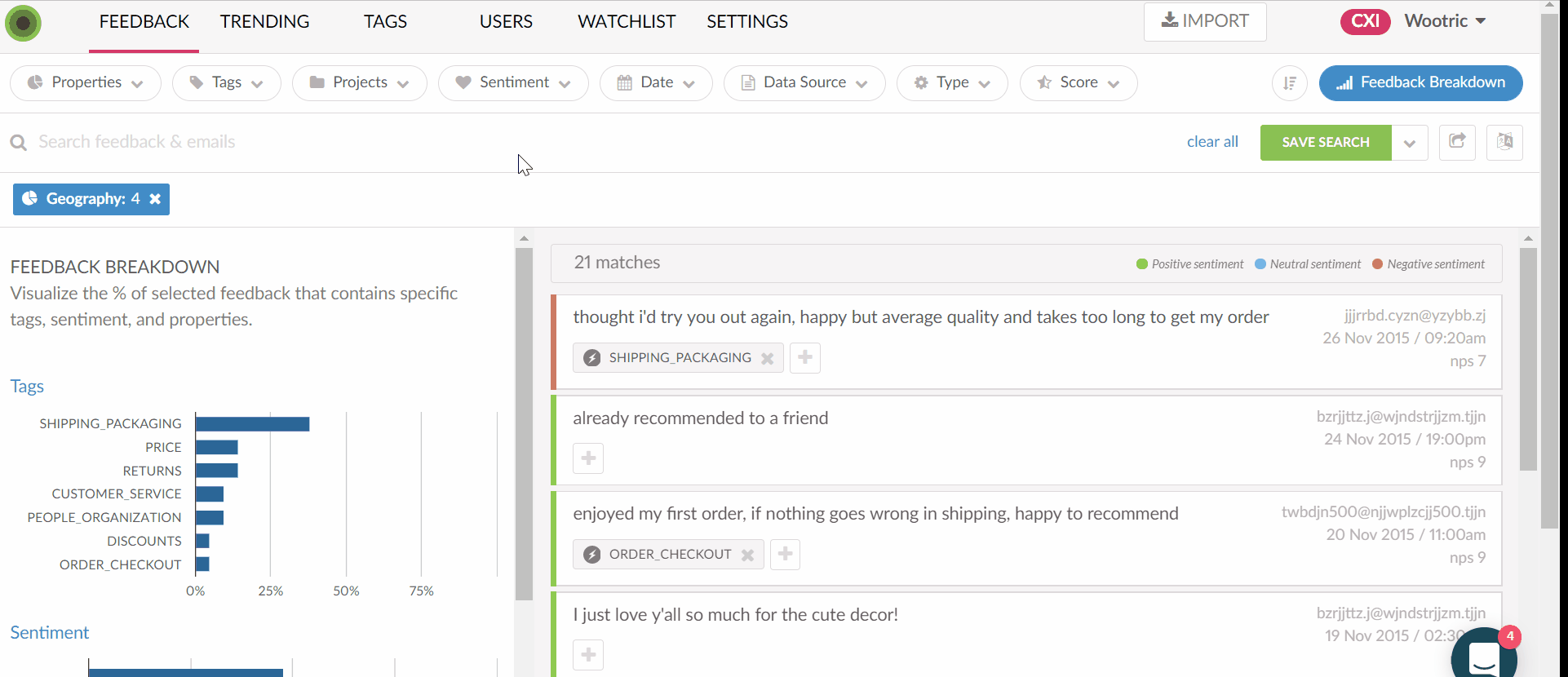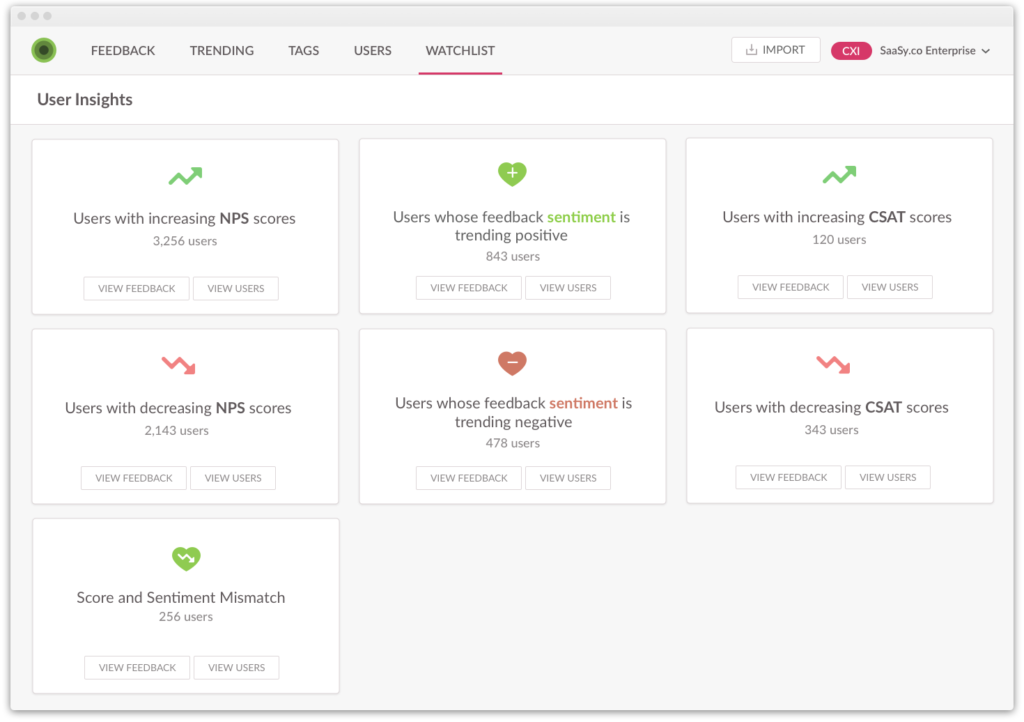CX Tipping Point: 7 Signs You Need Text & Sentiment Analytics

The potential for machine learning to elevate the customer experience has everyone buzzing. AI-powered text and sentiment analysis can be an incredible solution for specific problems that CX pros face.
But how do you know when the time is right to move to the next level of CX? Are there new tools you can purchase to step your game up? How do you know they’ll be worth it?
There are clear signs that your CX program is ready for, and your company could quickly benefit from, text and sentiment analysis. And we’ll delve into them here.
Before we get going, some definitions:
- Text analysis takes qualitative customer comments and determines relevant themes. Software companies might see themes such as ‘feature request’, ‘bug’, or ‘pricing’. This allows you to quickly see what your customers are focusing on, and then dive in to see what they’re specifically saying about each topic.
- Sentiment analysis offers micro and macro insights into how your customers are feeling about your company and products. It determines whether the text received for each text theme is positive, negative, or neutral. It also analyzes the comment as a whole, assigning sentiment to the entire verbatim text.
Let’s look at the 7 signs text and sentiment analytics will be worth the investment for your company.
1. You have a mature or quickly-maturing CX program.
Those of you considering text and sentiment analytics probably already have a few key elements in place:
- A customer experience strategy and a Voice of Customer listening system
- A C-suite sponsor who has been fostering a customer-centric culture across the whole company with NPS as the guiding star
- A system asking for feedback through the entire customer journey
Now that you have a relatively mature CX program, you’re wondering how to extract even more value out of it.
2. You receive 500+ comments per month (or you’re headed there.)
Ideally, you want to listen to all of your customers – not just a sample or the first to respond. In reality, at a certain point the sheer volume of incoming customer feedback is more than a CX program can handle without an upgrade. You know this is the case when:
- You feel excitement and dread regarding the amount of feedback you receive.
- You’re anticipating a whole lot more comments soon.
- You’ve even had to cap the number of comments you receive in a day to avoid being overwhelmed with the task of organizing and responding to everyone.
Overwhelming amounts of feedback is an amazing problem to have, but a problem nonetheless. Using text and sentiment analytics, you can turn unstructured qualitative feedback, like NPS comments, into organized insight in a matter of minutes.
Text and sentiment analytics allow you to analyze customer feedback using Natural Language Processing, looking something like this:

By combining text and sentiment analytics, you can search negative comments and quickly assess, for example, that 80% of your negative comments are about pricing. Or 45% of your customers in the Northeast region are talking about slow delivery times. That summary lets you know where to focus resources, and how quickly you need to make the change relative to other company priorities.
3. You’re sitting on a goldmine of feedback, but unable to get actionable insights.
Do you have a backlog of comments waiting to be read and sorted? Or maybe you’ve skimmed a few comments to answer the urgent ones, but you keep putting off the others.
One of our clients came to us with NPS survey comments from thousands of users. But rather than mining that information, they were running focus groups to prioritize feature requests because it was easier. They were duplicating efforts to get information they already had but couldn’t access and act on.
“The two biggest mistakes [in CX] are not doing qualitative research in the first place and then not putting it to use.” –Morgan Brown, Product Manager at Facebook and coauthor of ‘Hacking Growth’
If you’re feeling this pain, it’s time to automatically mine the insight from that pile of comments you’ve been sitting on. Turn anecdotes and hunches that you’ve got about your customer experience into evidence-backed insight by using. And do it quickly with text and sentiment analytics.
Source: CXInsight™ Dashboard
Sliced and diced organized feedback is easily available with many platforms that offer text and sentiment analytics. Doing this can help you understand the root cause of trends – like the needs of different customer personas or geographic regions – more comprehensively.
4. Manual feedback organization & categorization is insightful, but painfully slow.
While some customers duplicate efforts between data gathering and focus groups to get insight, other CX pros just bite the bullet and spend hours reading customer comments, labeling them, and funneling them into an unwieldy spreadsheet. They’re understandably frustrated by how difficult it is to get actionable insight.
By using text and sentiment analytics, humans can get huge quantities of customer feedback sorted and analyzed at the push of a button. Better yet, computers don’t have bad days or lose focus.
Once organized with tags, your time is freed up to look at the themes and trends that arise from the noise, then create actionable strategies based on those insights.
Now you can jump straight into action and the interns can work on more interesting, valuable projects!
PRO TIP: To get high quality insights at the push of a button, algorithms need to be trained. Be sure your feedback management software vendor has a team that will work with your data to ensure you get valuable insight from the start. With more data and occasional human guidance, you’ll get better and faster insight over time.
5. Your CX program lacks a real-time issue detection system.
An important element to providing a good customer experience is making sure any issues are handled quickly and efficiently. If you can detect and address them before your customer has a real issue, your CX program has paid for itself.
One of the benefits of having text and sentiment analysis is that your data and insights are updated in real-time. This means you have a new issue detection system.
Source: CXInsight™ Dashboard
This works best for a more mature customer feedback program with an established baseline, or status quo. For example, you know that on any given day, in any given geographic region, about 10% of your comments are tagged with ‘out of stock’ as an issue. When you check in and see that in Texas, 25% of comments coming in are tagged ‘out of stock’, that raises a red flag. You can immediately dig into specifics, read through the verbatims, and send those comments to the right people for follow up before the issue blows out of proportion.
The CX dream of being proactive in solving issues can be achieved with the help of automated organization of qualitative feedback.
6. Your internal teams aren’t agreeing on CX priorities.
It’s a given that successful companies focus on customer needs and experiences. The question is: is everyone at your company seeing the same information in the same way? If not, you’re wasting time and costly resources with competing priorities, and it is definitely time to invest in tools to fix it.
By having your CX tech parse the text and sentiment of your 1K+ daily inputs of customer feedback, you can democratize the information and insights across every team at your company. And that will ensure team leaders can quickly align to address the right priorities. So product development and customer support will be on the same page, and features will get developed (or possibly de-bugged) to meet the most important needs of the customer.
How does that happen? Feedback from every customer touchpoint is analyzed, from in-product surveys to emails. In this example, support ticket subject lines are auto-categorized and everyone from support to service to product to the c-level can see what issues are hot items to address.

Source: CXInsight™ Dashboard
Looking at the text analytics, it quickly becomes apparent that 15% of the support tickets are related to bugs that need to be addressed. On the proactive front, product could also delve into comments tagged “feature request” and focus on user concerns about UX/UI.
7. You need to demonstrate the ROI of your CX program.
Companies are eager to hop on the CX bandwagon, but it can still be a fight to get the proper resources to make a CX program thrive. You’ve probably already shown the C-suite the correlation between CX and revenue growth, but there’s pressure to squeeze a little more ROI out of what you’ve established.
Investing in a tool that pulls ROI from data is an expense. But it’s a more strategic spend than, and offers more immediate follow-up and action, than performing passive data review and organization. It’s also a moredirect value-add and much less expensive than hiring a third party human operation.
The cascading effects throughout the organization will increase ROI in the long-term as well.
- Product teams can prioritize and build with evidence-based confidence.
- Marketing teams will gain an understanding of different personas and see customers excited to spread the word about your business.
- Support and operations teams will have early warning of potential issues and have more context when dealing with problems.
In the end, qualitative data is crucial to extracting value out of CX initiatives. Having more data from engaged customers should not be an obstacle.
Is this the point?
Are you seeing any of these 7 signs when you look at your company’s CX program? If so, do a cost benefit analysis. Typically, once your program has matured, the cost of tools that create actionable insights out of customer feedback are far cheaper than the cost of misaligned resources and long delivery times. Text and sentiment analytics make the resources you put into CX initiatives efficient, and turn the large quantity of unstructured data into an advantage by mining insight that would otherwise sit in limbo. Move this tipping point in your favor.




